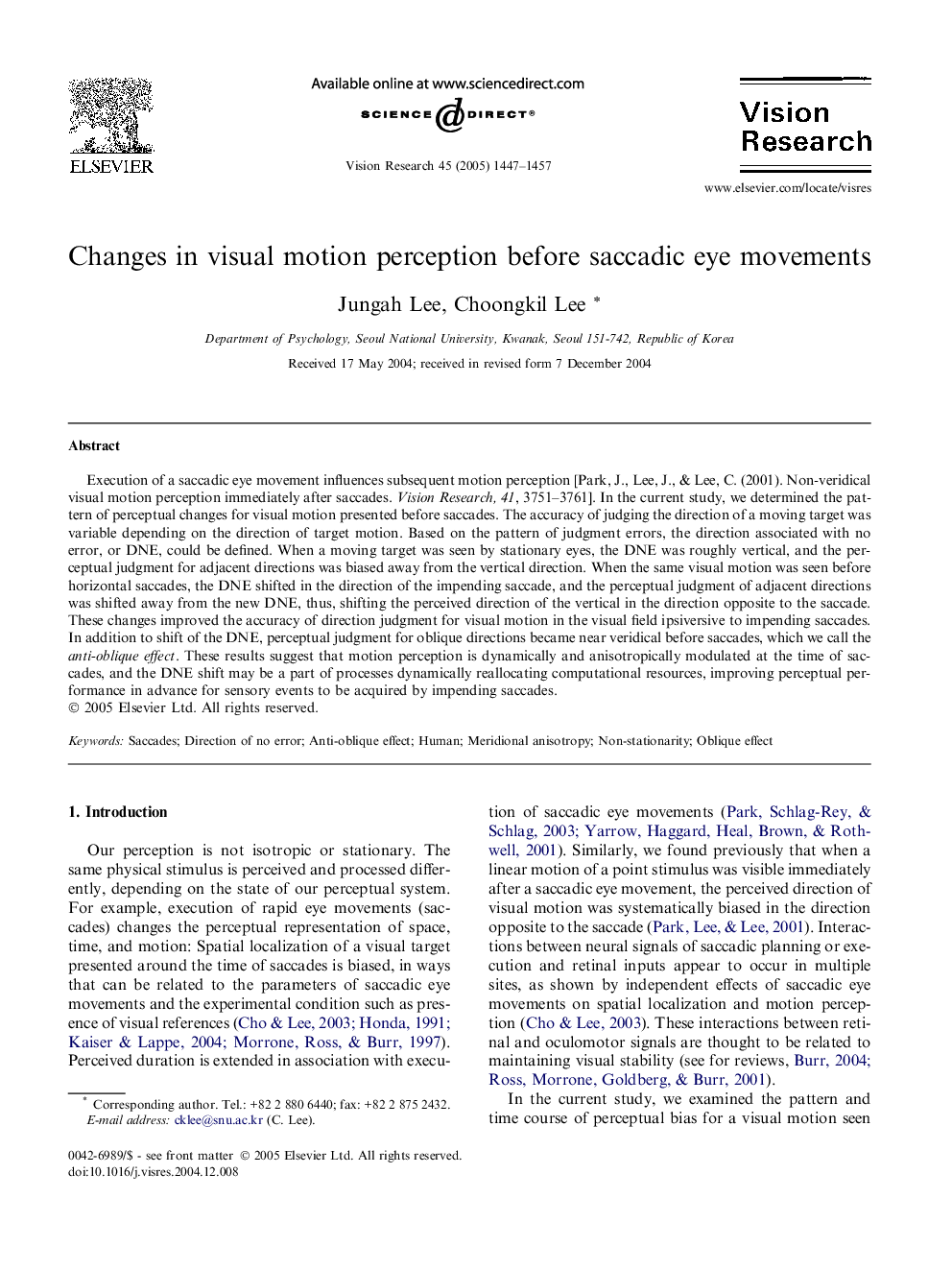| Article ID | Journal | Published Year | Pages | File Type |
|---|---|---|---|---|
| 9348501 | Vision Research | 2005 | 11 Pages |
Abstract
Execution of a saccadic eye movement influences subsequent motion perception [Park, J., Lee, J., & Lee, C. (2001). Non-veridical visual motion perception immediately after saccades. Vision Research, 41, 3751-3761]. In the current study, we determined the pattern of perceptual changes for visual motion presented before saccades. The accuracy of judging the direction of a moving target was variable depending on the direction of target motion. Based on the pattern of judgment errors, the direction associated with no error, or DNE, could be defined. When a moving target was seen by stationary eyes, the DNE was roughly vertical, and the perceptual judgment for adjacent directions was biased away from the vertical direction. When the same visual motion was seen before horizontal saccades, the DNE shifted in the direction of the impending saccade, and the perceptual judgment of adjacent directions was shifted away from the new DNE, thus, shifting the perceived direction of the vertical in the direction opposite to the saccade. These changes improved the accuracy of direction judgment for visual motion in the visual field ipsiversive to impending saccades. In addition to shift of the DNE, perceptual judgment for oblique directions became near veridical before saccades, which we call the anti-oblique effect. These results suggest that motion perception is dynamically and anisotropically modulated at the time of saccades, and the DNE shift may be a part of processes dynamically reallocating computational resources, improving perceptual performance in advance for sensory events to be acquired by impending saccades.
Related Topics
Life Sciences
Neuroscience
Sensory Systems
Authors
Jungah Lee, Choongkil Lee,
